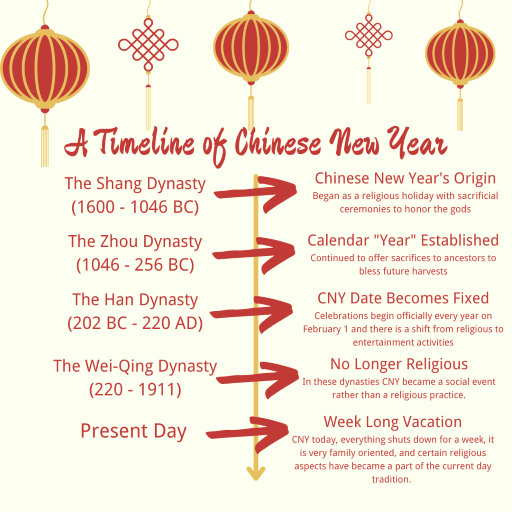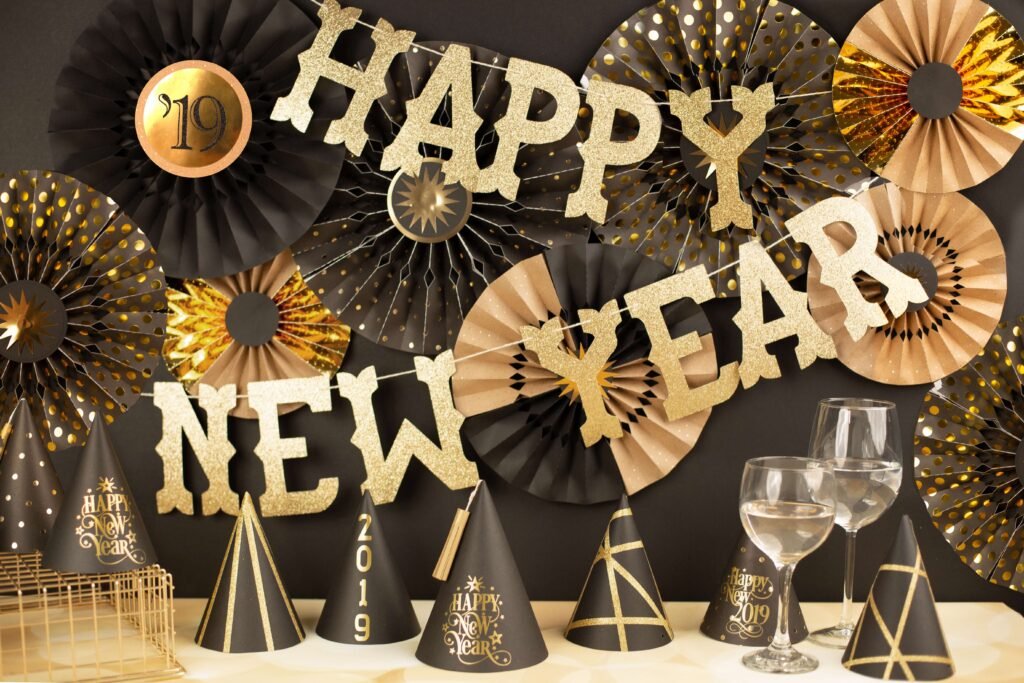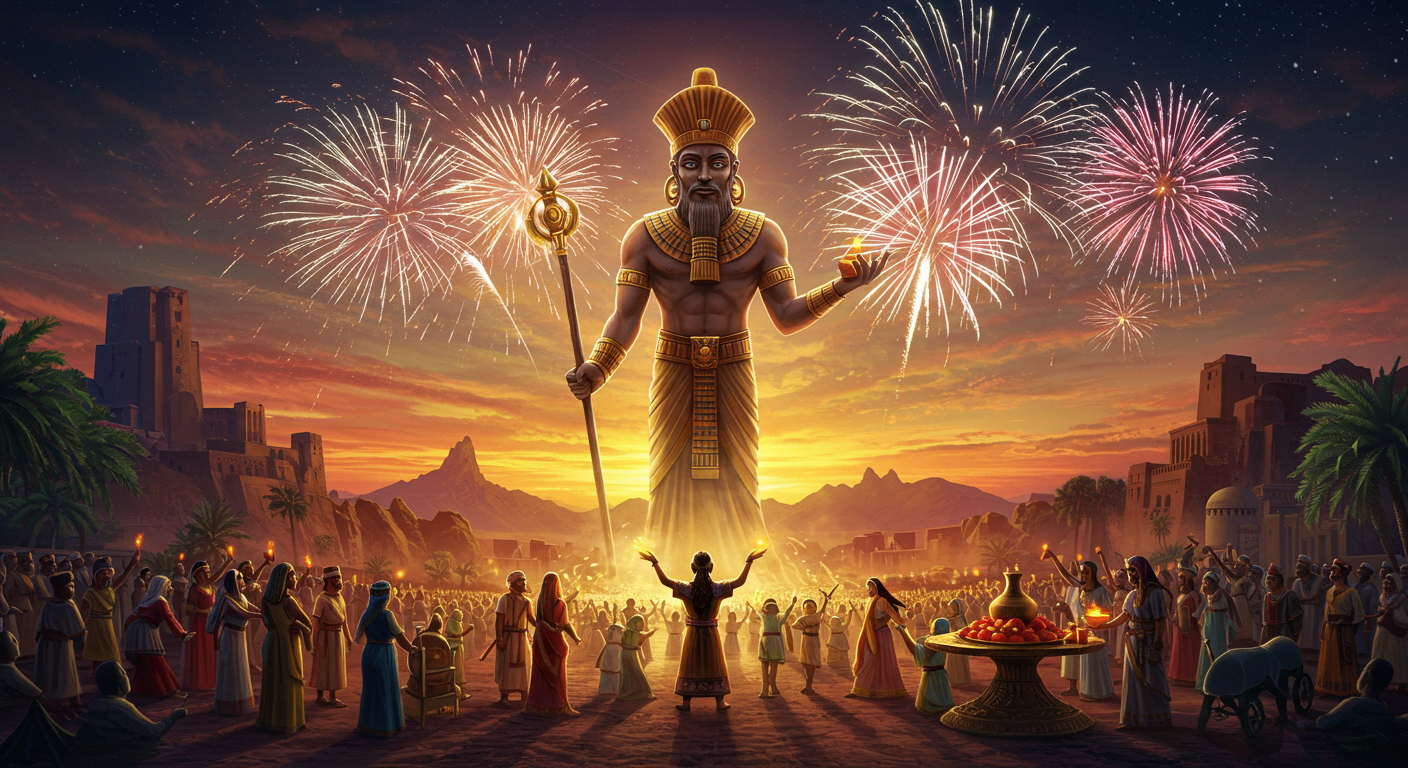Happy New Year is a phrase that resonates across cultures, marking the celebration of new beginnings. In summary, Article delves into the rich history and evolution of New Year celebrations. From ancient Babylonian rituals to modern global traditions, the journey is fascinating. This journey reflects the diverse ways in which cultures express their hopes and aspirations for the future.
The history of New Year’s Day reveals a tapestry of cultural practices and beliefs. Ancient New Year celebrations began with the Babylonians, who held the Akitu festival. This festival celebrated the spring equinox and included various rituals that honored the sky god Marduk. In summary, Festival involved various rituals that honored the sky god Marduk and his victory over Tiamat. The Babylonians reenacted Marduk’s victory over Tiamat, which lasted for 11 days filled with feasting and dancing. This festival significantly influenced the origins of New Year’s traditions in various cultures. The impact of these traditions can still be felt in contemporary celebrations around the world.
As time progressed, In truth, the evolution of New Year celebrations adapted to different cultural influences and calendar systems. To begin with, The Roman New Year occurred in March, but the Julian calendar reforms shifted it to January 1st. This change laid the groundwork for the Gregorian calendar New Year we recognize today. Emphatically, Diverse traditions emerged, such as the lunar-based Chinese New Year and the agricultural significance of the Egyptian New Year traditions.
Global New Year traditions showcase the rich cultural histories that shape celebrations today. For instance, the Persian Nowruz festival symbolizes rebirth and renewal. Ultimately, These diverse customs make each celebration unique yet connected.
Experience the Magic of the Happy New Year Festival Akitu and the Glory of Marduk
Have you ever wondered how ancient civilizations celebrated the New Year? The Akitu festival was essential in signifying the commencement of the agricultural year for the Babylonians. During This time, rituals included reenacting Marduk’s triumph over the sea goddess Tiamat, showcasing the importance of these beliefs in their culture. These rituals served not only as entertainment but also as a means of reinforcing community values and identity.
The earliest known New Year celebrations trace back to ancient civilizations, particularly the Babylonians. The festival included not only feasting and dancing but also the crowning of a new king or the reaffirmation of the current king’s rule. This aspect of leadership was crucial, as it symbolized the community’s unity and strength. Such ceremonies were vital in maintaining social order and collective memory within the society.
As the history of New Year’s Day evolved, To put it another way, different cultures adapted their celebrations to reflect their unique traditions. The Roman New Year originally occurred in March, but the Julian calendar reforms shifted it to January 1st. This change significantly influenced the Gregorian calendar New Year that many cultures recognize today.
Besides Roman traditions, various other New Year celebrations emerged worldwide. For instance, the Chinese New Year has a rich history tied to lunar cycles, while the Egyptian New Year traditions celebrated the annual flooding of the Nile. Each of these customs highlights the diverse ways societies honor the passage of time and the arrival of a new year.
What’s more, Moreover, The Persian Nowruz festival symbolizes rebirth and renewal, emphasizing family gatherings and communal feasting. Ultimately, This festival’s importance established foundational cultural practices that continue to be celebrated in various forms. Not only did the influence of the Akitu festival become evident in various cultures. The significance of the Babylonian New Year celebration laid the groundwork for future New Year traditions across different cultures.
What Happens When You Celebrate Like the Babylonians Did
Imagine a vibrant festival lasting 11 days, filled with feasting, dancing, and the crowning of a king. This was the essence of the Babylonian New Year celebration, a pivotal event that shaped future New Year traditions worldwide. The Babylonian New Year festival emphasized community and agricultural renewal. This emphasis on community reflects a broader human desire for connection and shared purpose during significant life events.
The Babylonian New Year festival, known as Akitu, was a grand affair that involved elaborate rituals. In summary, Aspect of leadership was crucial, as it symbolized the community’s unity and strength. During This time, the Babylonians celebrated the arrival of spring, which marked the beginning of their agricultural year. The festival included not only feasting and dancing but also the crowning of a new king or the reaffirmation of the current king’s rule. This aspect of leadership was crucial, as it symbolized the community’s unity and strength. The crowning of a king during the festival was a powerful reminder of the community’s collective identity and aspirations.
As the history of New Year’s Day evolved, Not only did the influence of the Akitu festival become evident in various cultures. For instance, the Roman New Year originally took place in March, but the Julian calendar reforms shifted it to January 1st. This change significantly impacted the Gregorian calendar New Year that many cultures recognize today. The adaptation of these traditions illustrates how ancient New Year celebrations have shaped modern practices.
Coupled with Roman traditions, other cultures developed their unique New Year celebrations. The Chinese New Year history, for example, is deeply rooted in lunar cycles and agricultural practices. Similarly, Whereas, The Egyptian New Year traditions celebrated the annual flooding of the Nile, showcasing the diverse ways societies honor the passage of time. Each of these customs reflects the values and beliefs of their respective cultures.
Moreover, the Chinese New Year history showcases a rich tapestry of customs that emphasize family reunions and the importance of good fortune. Ultimately, when the history of New Year’s Day evolved, different cultures adapted their celebrations to reflect their unique traditions.

Happy New Year and the Surprising Cultural Influences That Shaped It
Overall, the evolution of New Year’s Day reflects a rich history shaped by cultural influences and calendar reforms. Various civilizations have contributed to the traditions we celebrate today. Understanding these influences reveals the significance of New Year’s celebrations across cultures. These celebrations not only mark the passage of time but also reflect the values and beliefs of the societies that observe them.
The history of New Year’s Day has undergone significant transformations influenced by diverse cultures and their unique calendars. To begin with, The Roman New Year was celebrated in March, aligning with the spring equinox. Nonetheless, At this time, in 153 BC, the Julian calendar reforms shifted the celebration to January 1st, marking a pivotal change in how societies recognized the new year.
January 1st became a day of celebration characterized by feasting and festivities. In summary, Change laid the groundwork for the Gregorian calendar New Year we recognize today. The incorporation of various customs from ancient New Year celebrations enriched the significance of this day. This blending of traditions illustrates the dynamic nature of cultural practices over time.
In addition to Roman traditions, the Chinese New Year history showcases the importance of lunar cycles in marking new beginnings. Moreover, The Chinese New Year history showcases a rich tapestry of customs that emphasize family reunions and the importance of good fortune. In like manner, The Egyptian New Year traditions celebrated the annual flooding of the Nile, emphasizing agricultural renewal. What’s more, the Persian Nowruz festival symbolizes rebirth and renewal, emphasizing family gatherings and communal feasting. These traditions resonate with the values of different societies, showcasing a shared human experience.
What Happens When Cultures Clash During New Year Celebrations
Cultural New Year celebrations vary significantly, with the Chinese observing a lunar calendar and the Egyptians marking the flooding of the Nile. Each Culture brings its unique customs and beliefs to the celebration, creating a vibrant global mosaic. This diversity enriches the celebration, allowing for a deeper understanding of different cultural perspectives.
In contrast, other cultures, such as the Chinese, celebrate New Year based on lunar calendars, with the Chinese New Year history rich in traditions and customs. This festival emphasizes family reunions, feasting, and various rituals that symbolize good fortune and prosperity. In fact, Many cultures incorporate rituals to ward off evil spirits and bring good fortune for the coming year. The significance of these practices reflects the deep-rooted values within Chinese society, showcasing their connection to ancestral heritage. Such connections to heritage are vital in maintaining cultural identity in an ever-changing world.
Egyptian New Year traditions also played a role, as they celebrated the flooding of the Nile, which was crucial for agriculture. In summary, Annual event marked a time of renewal and abundance, as the Nile’s waters enriched the land. The Egyptians honored this natural cycle through various ceremonies, emphasizing their reliance on the river for sustenance and growth.
Moreover, the Persian Nowruz festival symbolizes rebirth and renewal, emphasizing family gatherings and communal feasting. In summary, Celebration occurs at the spring equinox, marking the arrival of longer days and warmer weather. The customs associated with Nowruz reflect a universal desire to celebrate new beginnings, connecting people across different cultures.
As a result, the evolution of New Year’s Day reflects a rich history shaped by cultural influences and calendar reforms. Various civilizations have contributed to the traditions we celebrate today. Understanding these influences reveals the significance of New Year’s celebrations across cultures.

Explore the Unique Histories of New Year’s Traditions That Bring Us Together in Hope
The diverse origins of New Year’s traditions across cultures highlight their unique histories and beliefs, showcasing various rituals that symbolize renewal, reflection, and the hope for good fortune in the coming year. Each Culture’s unique practices highlight the universal desire to celebrate the arrival of a new year. Each culture has crafted its own distinctive ways to mark the passage of time, reflecting their values and aspirations. This rich diversity illustrates the tapestry of human experience, where celebrations serve as a bridge connecting past and present. These connections remind us of our shared humanity and the common threads that bind us together.
The origins of New Year’s traditions vary widely across cultures, reflecting their unique histories and beliefs. For instance, the Persian Nowruz festival, celebrated on the vernal equinox, symbolizes rebirth and renewal, marking the start of spring. This ancient celebration is not only a time for joy and festivity but also a moment for reflection and gratitude for the past year. In fact, Many cultures incorporate rituals to ward off evil spirits and bring good fortune for the coming year.
Rituals often include symbolic acts, such as cleaning the home, lighting fires, or performing specific dances. These actions aim to ensure a prosperous and safe year ahead. For example, the Babylonian New Year festival involved elaborate ceremonies that honored deities and celebrated agricultural renewal. Similarly, the Roman New Year on January 1st marked a significant transition, influenced by the Julian calendar reforms.
Moreover, the Chinese New Year history showcases a rich tapestry of customs that emphasize family reunions and the importance of good fortune. Meanwhile, the Egyptian New Year traditions celebrated the annual flooding of the Nile, which was crucial for agriculture and renewal. Each culture’s unique practices highlight the universal desire to celebrate the arrival of a new year.
Furthermore, Additionally, The Persian Nowruz festival symbolizes rebirth and renewal, emphasizing family gatherings and communal feasting, reflecting Shared values across cultures. This celebration occurs at the spring equinox, marking the arrival of longer days and warmer weather. The customs associated with Nowruz resonate with the universal desire to celebrate new beginnings, connecting people across different cultures. Ultimately, The origins of New Year’s traditions reveal a fascinating tapestry of cultural practices that unite humanity in the celebration of life and renewal.
Discover How Ancient New Year Celebrations Shape Modern Joy
How do ancient New Year celebrations connect with modern practices, emphasizing family gatherings, feasting, and cultural reflection?
The connection between ancient New Year celebrations and modern practices is profound. Families worldwide gather to celebrate, sharing meals and stories. In fact, These gatherings reflect the values of unity and togetherness that transcend cultures. Each celebration serves as a reminder of heritage and the importance of family. These gatherings create lasting memories that strengthen familial bonds and cultural ties.
Understanding diverse traditions enhances our appreciation of New Year’s significance globally. In summary, Transition laid the groundwork for the Gregorian calendar New Year that many cultures observe today. The Julian calendar reforms shifted the Roman New Year to January 1st, impacting modern celebrations. Additionally, Egyptian New Year traditions celebrated the annual flooding of the Nile, crucial for agriculture. These diverse customs enrich our understanding of how societies honor the passage of time. They also highlight the ways in which cultural practices evolve while retaining their core significance. Ultimately, The evolution of these traditions showcases the enduring significance of family and cultural reflection in celebrating the Happy New Year.

Discovering the Essence of Happy New Year Through Ancient Rituals and Modern Festivities
New Year celebrations have evolved significantly, reflecting diverse cultural practices and historical influences across the globe. These festivities, rooted in ancient traditions, continue to shape modern celebrations today. Understanding their origins enriches our appreciation of these vibrant customs. This appreciation fosters a deeper respect for the diverse ways in which cultures celebrate life and renewal.
The Babylonian New Year festival, known as Akitu, marked the beginning of the agricultural year. This festival celebrated the victory of the sky god Marduk and included various rituals. The 11-day celebration featured feasting, dancing, and the crowning of a king, influencing future New Year traditions worldwide.
As time progressed, the history of New Year’s Day transformed through cultural influences and calendar reforms. For instance, the Roman New Year on January 1st emerged from the Julian calendar reforms. Meanwhile, the Chinese New Year history reflects lunar calendar observances, while Whereas, The Egyptian New Year traditions celebrated the annual flooding of the Nile.
The diverse origins of New Year’s traditions highlight unique cultural beliefs and practices. Each celebration symbolizes renewal, reflection, and the hope for good fortune in the coming year. The connection between ancient and modern New Year celebrations emphasizes the importance of family gatherings, feasting, and cultural reflection. These elements are essential in fostering a sense of belonging and continuity across generations. Marking The celebration of new beginnings, these traditions remind us of the shared human experience as we wish each other a Happy New Year.
Listen to an AI-Generated Podcast of this Blog
Unveiling the Origins of New Year Celebrations
Did you know that the earliest known New Year celebrations date back to ancient Babylon? The Babylonians celebrated the New Year during the Akitu festival. This festival marked the arrival of spring and the agricultural year. In fact, it lasted for 11 days filled with feasting and rituals. During this time, they honored the sky god Marduk. They reenacted Marduk’s victory over the sea goddess Tiamat. Subsequently, this festival influenced many cultures’ New Year traditions. The Roman New Year originally occurred in March. However, the Julian calendar reforms shifted it to January 1st. This change laid the groundwork for the Gregorian calendar New Year we recognize today. Similarly, the Chinese New Year history reflects lunar cycles. The Egyptian New Year traditions celebrated the annual flooding of the Nile. The Persian Nowruz festival symbolizes rebirth and renewal. These diverse origins highlight the rich tapestry of New Year celebrations across cultures.
FAQs
What are the origins of New Year’s traditions?
The origins of New Year’s traditions vary widely across cultures, reflecting unique histories and beliefs.
Can you tell me about the Babylonian New Year festival?
The Babylonian New Year festival, known as Akitu, marked the beginning of the agricultural year with feasting and rituals.
How did the Roman New Year change over time?
The Roman New Year originally occurred in March but shifted to January 1st due to Julian calendar reforms.
What is the significance of the Gregorian calendar New Year?
The Gregorian calendar New Year reflects the culmination of various cultural influences and calendar reforms throughout history.
What does the Chinese New Year history emphasize?
The Chinese New Year history emphasizes family reunions, good fortune, and various customs tied to lunar cycles.
How do Egyptian New Year traditions celebrate renewal?
Egyptian New Year traditions celebrate the annual flooding of the Nile, which is crucial for agriculture and renewal.
What does the Persian Nowruz festival symbolize?
The Persian Nowruz festival symbolizes rebirth and renewal, emphasizing family gatherings and communal feasting during spring equinox.
How did ancient New Year celebrations influence modern practices?
Ancient New Year celebrations connect with modern practices through family gatherings, feasting, and cultural reflection across societies.
What role did the Akitu festival play in Babylonian culture?
The Akitu festival played a crucial role in Babylonian culture, symbolizing community unity and agricultural renewal through rituals.
How do different cultures honor the passage of time during New Year?
Different cultures honor the passage of time through unique customs, reflecting their values and aspirations during New Year celebrations.
Come Visit Us
We have three fantastic locations we’d love to invite you to! If you’re in the Chicagoland area, you can come chill with us at either our Grayslake or Schaumburg locations. Alternatively, if you’re in Wisconsin, stop by and visit us at our Kenosha lounge. Please note that you must be 21+ to enter with a valid ID. We hope to see you soon!


